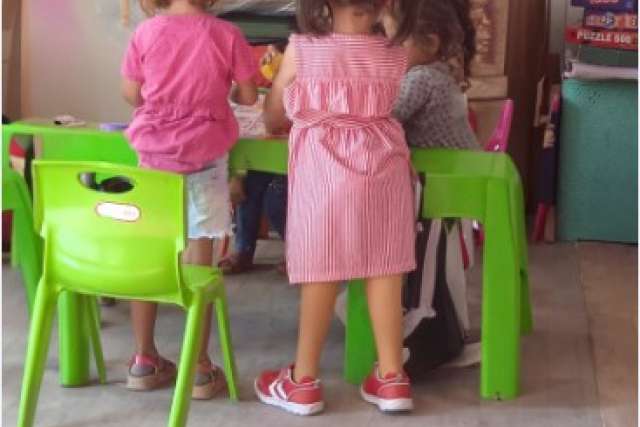Not enough U.S. hospitals are prepared for an influx of children who may be injured or separated from their caregivers when a disaster strikes, studies have shown.
However, , medical director of UCLA Health’s Pediatric Intensive Care Unit, stressed hospitals should plan for the unique biological and emotional needs of children in order to best provide medical care and comfort.
“Children are both vulnerable and resilient at the same time,” Dr. Bulut said.
Dr. Bulut is helping strengthen pediatric disaster preparedness at UCLA Health and beyond. She started a philanthropic effort to provide prosthetics to children who lost limbs after a powerful 2023 earthquake in her native Turkey.
Locally, Dr. Bulut, a clinical professor at the David Geffen School of Medicine at UCLA, recently organized the Society of Critical Care Medicine’s Fundamentals of Critical Care Support, Disaster Preparedness Course for the first time at UCLA for providers around the region.
“Even if you are perfectly prepared in your institution, you have to be communicating and collaborating with other hospitals," she said.
Advance planning
A magnitude 4.6 earthquake that struck Feb. 9 near Malibu served as a reminder of what challenges could exist with a more severe quake. The ground shook early in the afternoon on a Friday, when many children would be away from their families, at school or daycare.
In the case of a large earthquake, hospitals need to be prepared to meet medical and transportation needs of children, as well as family reunification, Dr. Bulut said.
“We have sophisticated hospitals,” she said. “But when roads are damaged, the airport is not accessible, how do you save these children? How do you get to them? That’s why future preparation is important.”
Yet research has found that less than half of U.S. hospitals have written disaster policies that include children. Those same hospitals, however, could need to respond quickly to help young patients after a natural disaster, mass shooting or other catastrophic event.
Kids would not necessarily be routed to a specialized pediatric hospital because of lack of capacity, distance or transportation obstacles, Dr. Bulut said.
“The majority of children will be taken care of in adult emergency rooms,” she said. “Kids’ vital signs will be different, their medication doses will be different.”
For children who are not injured but become separated from the adults responsible for them, hospitals can plan for playing an important role, Dr. Bulut said.
“Family reunification is extremely important, advanced planning is necessary in order to provide a safe area for the children to be placed and returned to their parents as soon as possible,” she said.
According to the American Academy of Pediatrics, all hospital emergency departments and emergency medical services providers should have age- and size-appropriate equipment as well as staff training for caring for children. Supply stockpiles should include pediatric equipment and medicines.
Dr. Bulut, a pediatric critical care specialist at , said disaster preparedness in a hospital is complex and requires practice.
“All these things can be written on a piece of paper, but if you don’t practice these things, you’re not going to be able to act quickly,” she said. “You have to do drills.”
Families can also take steps to keep children safe. Dr. Bulut said family disaster preparedness varies by age. When children are old enough, they should know their parents’ full names and memorize their phone numbers and addresses. Placing an emergency contact card inside a child’s backpack may also be useful.
When her own children were young, she also implemented a family password to prevent them from going with a stranger.
The AAP recommends also teaching kids what different danger or warning signals sound like, such as a fire alarm or tornado siren.
Global effort
Last February, Dr. Bulut saw firsthand the importance of disaster response and the role doctors play in helping children.
Dr. Bulut happened to be on a flight to Turkey only days after a series of earthquakes devastated a region of the country about the size of Indiana. At least 50,000 people died and an estimated 500 children underwent amputations after they were injured in the rubble, she said.
During her plane ride to visit her parents in Ankara, she began mobilizing doctors in the U.S. and Turkey to help. UCLA Health provided resources to global health organizations and sent 24 pallets of medical supplies and care items.
“We knew these children not only lost their limbs but some also lost their parents, they lost their homes and there were no hospitals standing,” Dr. Bulut said.
The aid effort quickly expanded as Dr. Bulut and her colleagues realized the extent of the need.
“We did not know it was such a complex thing,” she said. “You can’t just buy a prosthesis like a pair of pants for a child. As children grow, prostheses need to grow with them. There’s also a psychological aspect of limb loss.”
Dr. Bulut helped found Project CATE, which stands for Child Amputees of Türkiye Earthquake, to provide physical therapy, counseling and educational scholarships. With the help of Bridge to Turkiye Fund and Turkish Philanthropic Funds, two U.S.-based nonprofit charity organizations, medical teams from the U.S. and Turkey have collaborated to establish a sustainable medical support system for these young survivors.
As a result, 144 children have received prosthetics so far, along with rehabilitation, psychotherapy and scholarships. The Child Wellness Center, a facility at Cukurova University, has also been established to help prepare for future disasters.
Dr. Bulut said limited specialized resources of pediatric care becomes even more problematic during disasters. Disaster preparedness is essential for children in every country, she noted.




